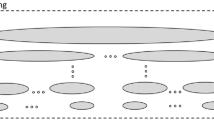Abstract
In this paper, we develop an adaptive approach to estimate the optimal preventive rejuvenation schedule, which maximizes the steady-state system availability. We formulate the upper and lower bounds of the predictive system availability using the one-look ahead predictive survival function from system failure time data and derive the pessimistic and optimistic rejuvenation policies. Then, we derive adaptive rejuvenation policies from the original data together with a right-censored observation. In the simulation experiments, we show the usefulness of the adaptive nonparametric predictive inference approach proposed in this paper.




Similar content being viewed by others
References
Adams, E. (1984). Optimizing preventive service of the software products. IBM Journal of Research and Development, 28(1), 2–14.
Avritzer, A., & Weyuker, E. J. (1997). Monitoring smoothly degrading systems for increased dependability. Empirical Software Engineering, 2(1), 59–77.
Avritzer, A., Bondi, A., Grottke, M., Weyuker, E. J., & Trivedi, K. S. (2006). Performance assurance via software rejuvenation: monitoring, statistics and algorithms. In DSN-2006: Proceedings of international conference on dependable systems and networks (pp. 435–444). IEEE CS Press.
Bao, Y., Sun, X., & Trivedi, K. S. (2003). Adaptive software rejuvenation: degradation model and rejuvenation scheme. In DSN-2003: Proceedings of international conference on dependable systems and networks (pp. 241–248). IEEE CS Press.
Bao, Y., Sun, X., & Trivedi, K. S. (2005). A workload-based analysis of software aging, and rejuvenation. IEEE Transactions on Reliability, 54(3), 541–548.
Bobbio, A., Sereno, M., & Anglano, C. (2001). Fine grained software degradation models for optimal rejuvenation policies. Performance Evaluation, 46(1), 45–62.
Castelli, V., Harper, R. E., Heidelberger, P., Hunter, S. W., Trivedi, K. S., Vaidyanathan, K. V., et al. (2001). Proactive management of software aging. IBM Journal of Research and Development, 45(2), 311–332.
Chen, X.-E., Quan, Q., Jia, Y.-F., & Cai, K.-Y. (2006). A threshold autoregressive model for software aging. In SOSE-2006: Proceedings of 2nd international symposium on service-oriented system engineering (pp. 34–37). IEEE CS Press.
Coolen, F. P. A., & Yan, K. J. (2004). Nonparametric predictive inference with right-censored data. Journal of Statistical Planning and Inference, 126(1), 25–54.
Coolen-Schrijner, P., & Coolen, F. P. A. (2004). Adaptive age replacement strategies based on nonparametric predictive inference. Journal of the Operational Research Society, 55, 1281–1297.
Dohi, T., Goševa-Popstojanova, K., & Trivedi, K. S. (2001). Estimating software rejuvenation schedule in high assurance systems. Computer Journal, 44(6), 473–485.
Dohi, T., Iwamoto, K., Okamura, H., & Kaio, N. (2003). Discrete availability models to rejuvenate a telecommunication billing application. IEICE Transactions on Communications (B), E86–B(10), 2931–2939.
Eto, H., & Dohi, T. (2006). Determining the optimal software rejuvenation schedule via semi-Markov decision process. Journal of Computer Science, 2(6), 528–534.
Garg, S., Telek, M., Puliafito, A., & Trivedi, K. S. (1995). Analysis of software rejuvenation using Markov regenerative stochastic Petri net. In ISSRE-1995: Proceedings of 6th international symposium on software reliability engineering (pp. 24–27). IEEE CS Press.
Garg, S., Pfening, S., Puliafito, A., Telek, M., & Trivedi, K. S. (1998). Analysis of preventive maintenance in transactions based software systems. IEEE Transactions on Computers, 47(1), 96–107.
Grottke, M., Lie, L., Vaidyanathan, K. V., & Trivedi, K. S. (2006). Analysis of software aging in a web server. IEEE Transactions on Reliability, 55(3), 411–420.
Hill, B. M. (1968). Posterior distribution of percentiles: Bayes’ theorem for sampling from a population. Journal of the American Statistical Association, 63(322), 677–691.
Huang, Y., Kintala, C., Kolettis, N., & Fulton, N. D. (1995). Software rejuvenation: analysis, module and applications. In FTC-1995: Proceedings of 25th international symposium on fault tolerant computing (pp. 381–390). IEEE CS Press.
Pfening, S., Garg, S., Puliafito, A., Telek, M., & Trivedi, K. S. (1996). Optimal rejuvenation for tolerating soft failure. Performance Evaluation, 27/28(4), 491–506.
Reinecke, P., Van Moorsel, A. P. A., & Wolter, K. (2004). A measurement study of the interplay between application level restart and transport protocol. In M. Malek, M. Manfred, & J. Kaiser (Eds.), Service availability: First international service availability symposium (ISAS 2004) (pp. 86–100). Berlin: Springer. LNCS 3335.
Rinsaka, K., & Dohi, T. (2005). Behavioral analysis of fault-tolerant software systems with rejuvenation. IEICE Transactions on Information and Systems (D), E88–D(12), 2681–2690.
Rinsaka, K., & Dohi, T. (2007a). A faster algorithm for periodic preventive rejuvenation schedule maximizing system availability. In M. Malek, M. Reitenspiess, & A. Moorsel (Eds.), Service availability: 4th international service availability symposium (ISAS 2007) (pp. 94–109). Berlin: Springer. LNCS 4526.
Rinsaka, K., & Dohi, T. (2007b). Non-parametric predictive inference of preventive rejuvenation schedule in operational software systems. In ISSRE-2007:Proceedings of 18th international symposium on software reliability engineering (pp. 247–256). IEEE CS Press.
Shereshevsky, M., Crowell, J., Cukic, B. Gandikota, V., & Liu, Y. (2003). Software aging and multifractality of memory resources. In DSN-2003: Proceedings of international conference on dependable systems and networks (pp. 721–730). IEEE CS Press.
Suzuki, H., Dohi, T., Goševa-Popstojanova, K., & Trivedi, K. S. (2002). Analysis of multi step failure models with periodic software rejuvenation. In J. R. Artalejo & A. Krishnamoorthy (Eds.), Advances in stochastic modelling (pp. 85–108). Edina: Notable Publications.
Tai, A. T., Alkalai, L., & Chau, S. N. (1999). On-board preventive maintenance: A design-oriented analytic study for long-life applications. Performance Evaluation, 35(3/4), 215–232.
Vaidyanathan, K. V., & Trivedi, K. S. (2005). A comprehensive model for software rejuvenation. IEEE Transactions on Dependable and Secure Computing, 2(2), 124–137.
van Moorsel, A. P. A., & Wolter, K. (2006). Analysis of restart mechanisms in software systems. IEEE Transactions on Software Engineering, 32(8), 547–558.
Wang, D., Xie, W., & Trivedi, K. S. (2007). Performability analysis of clustered systems with rejuvenation under varying workload. Performance Evaluation, 64(3), 247–265.
Yurcik, W., & Doss, D. (2001). Achieving fault-tolerant software with rejuvenation and reconfiguration. IEEE Software, 18(4), 48–52.
Author information
Authors and Affiliations
Corresponding author
Rights and permissions
About this article
Cite this article
Rinsaka, K., Dohi, T. Toward high assurance software systems with adaptive fault management. Software Qual J 24, 65–85 (2016). https://doi.org/10.1007/s11219-014-9264-0
Published:
Issue Date:
DOI: https://doi.org/10.1007/s11219-014-9264-0




